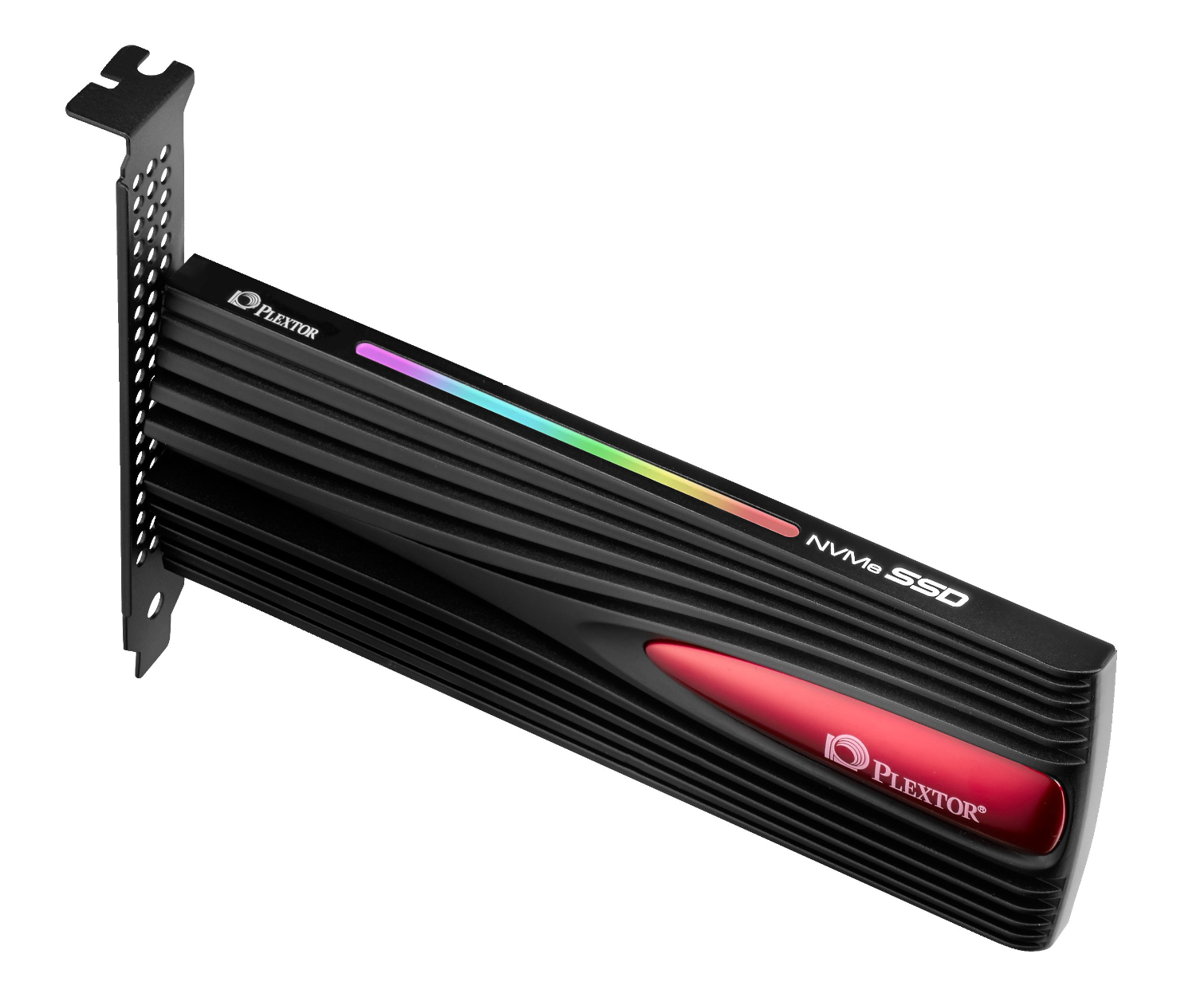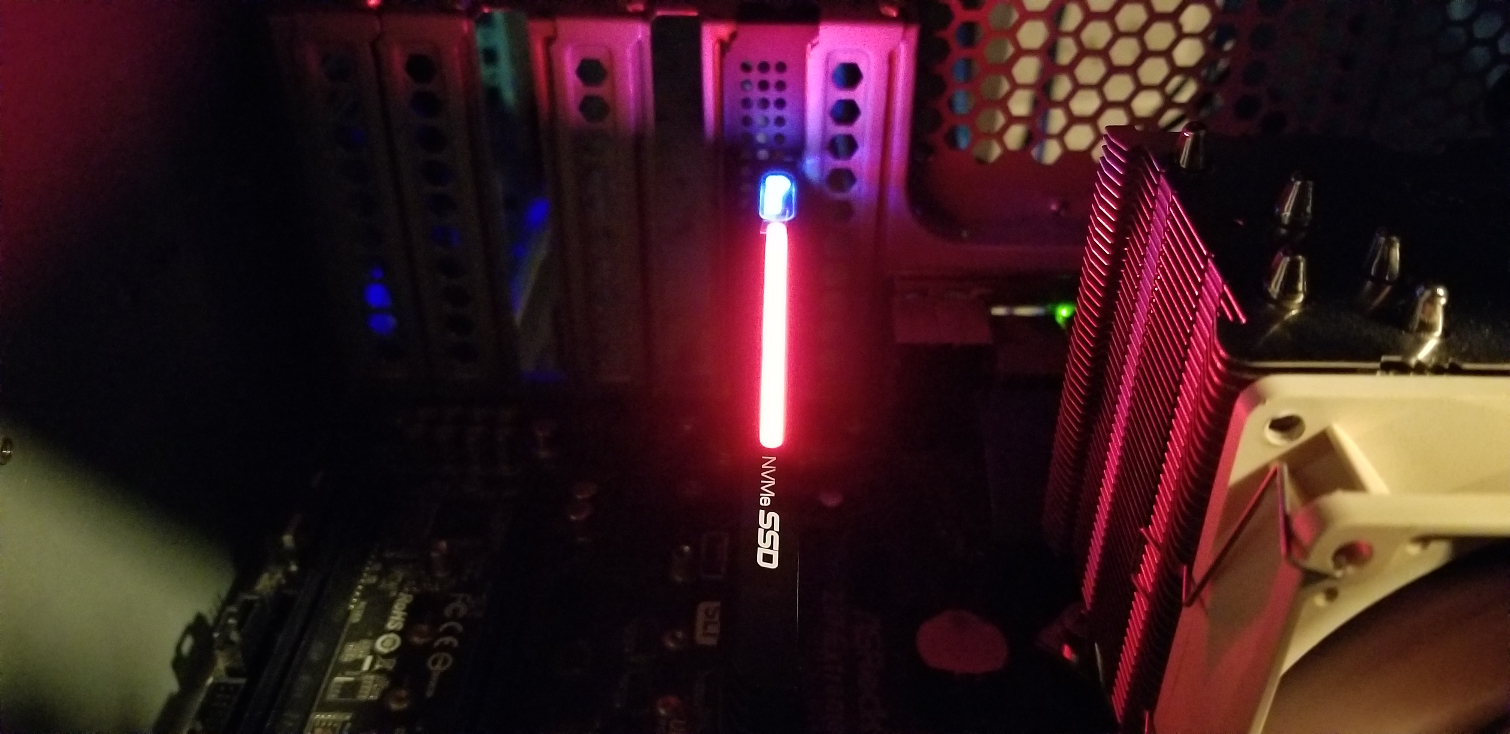Early Verdict
We like the M9Pe 1TB better than the 512GB, but this model offers most of the performance at a much lower price. This is far from a workstation SSD, but but it's sufficient for most users. Look for the M9PeG M.2 2280 with a heatsink for the best balance. It should fit in most notebooks without issue.
Pros
- +
Strong application performance
- +
Competitive pricing
- +
Variable pricing with three versions
Cons
- -
Small SLC cache
- -
No value-add software
- -
Old controller
Why you can trust Tom's Hardware
Specifications & Pricing
Plextor will release its new flagship M9Pe NVMe SSD in early 2018 to get ahead of the coming wave of SSDs powered by 64-layer NAND. These are the fastest SSDs Plextor has ever released, but they are also the first SSDs to come with a splash of RGB.
It will undoubtedly be a very competitive year for NVMe SSDs. We'll see more new products introduced than ever before with higher capacities, newer controllers, and lower price points. The frenetic pace of development, particularly on the flash controller side, is actually more interesting than when TLC swept in to become the low-cost MLC alternative. We've already spotted Samsung's new Polaris SSD controller, multiple controllers from Toshiba, four new models from Silicon Motion, and two from Phison.
But Plextor is taking a different path. The Marvell 88SS1093 controller, which debuted in 2015, returns with 3D NAND compatibility. As the eldest statesmen in the group, the Marvell 88SS1093 is at a disadvantage. The controller tends to run warm and can get hot even during moderate workloads. For this series, Plextor paired the controller with new 64-layer TLC BiCS NAND. The new wave of 64-layer flash offers increased performance, but it also requires advanced error correction technology that consumes more power. Combining faster performance and more robust error correction can cause an SSD controller to ramp up temperatures even faster.
A hot SSD controller can lead to thermal throttling, which is when an SSD enters a lower-performance state to prevent overheating. We tested Plextor's M8Pe in 2016 and the M8Se in 2017. During our testing, we found that the Marvell controller needed a cooler to prevent thermal throttling. The M8PeG, an M.2 SSD with a small heatsink, fought back throttling long enough that the condition didn’t interfere with most of our testing. The same SSD without a heatsink began throttling very early in our testing.
Plextor bought the heatsinks back with the same three-tier product strategy, but the designs are a little sleeker this round. The Y model, which has an M.2 SSD in an add-in card with a large heatsink, gains RGB lighting. You can't control the light show, but it changes colors based on drive activity.
Unlike the M8Se TLC SSD that came to market in mid-2017, the new M9Pe comes with a more competitive price tag. It's still early in the year and we haven't seen pricing for the other NVMe drives slated for release. For now, the M9Pe’s pricing looks good compared to what's already available.
Specifications
The M9Pe comes to market in three capacity points and Plextor has three separate models for each. The first axis of segmentation is straightforward: 256GB, 512GB, and 1TB. The different versions for each capacity are a bit more complicated.
Get Tom's Hardware's best news and in-depth reviews, straight to your inbox.
The M9PeY model is an M.2 2280 SSD slotted into an add-in card. It's also the first RGB SSD. You need a PCIe x4 slot (or larger) to accommodate the card. The M9PeY is the most expensive option because it includes a large heatsink that covers the full length of the card.
The M9PeG is an M.2 2280 SSD with a slim heatsink that spreads the heat from the controller to a larger surface area. We've found this to be an effective way to increase the length of time and the amount of data transferred before the drive begins to throttle. Plextor was the first company to release a retail M.2 SSD with a heatsink.
The M9PeGN is a standard M.2 2280 SSD without a heatsink. The "GN" drive is compatible with NVMe-capable notebooks and other devices that may not have room for a heatsink on the drive.
Aside from the RGB lighting, Toshiba's BiCS Flash is the exciting new component that separates the M9Pe from previous models. Plextor chose the latest 64-layer 3D TLC because it is denser than 2D (planar) NAND, but it actually has a relaxed lithography compared to 15nm planar NAND. The BiCS NAND allows the controller to program twice the amount of data in a single sequence, which boosts performance. BiCS stores 256Gbit (32GB) per die, but there's a 512Gbit (64GB) version coming in the future. Plextor should be able to use the larger die to produce 2TB SSDs.
The MP9e wields Marvell's 80SS1093 "Eldora" eight-channel NVMe controller. This is the third Plextor SSD to use the Eldora controller (it was on both M8xe drives). The Eldora is Marvell's first-gen tri-core controller that supports the NVMe 1.1 protocol. It's built on the 28nm process and supports up to 1TB of addressable capacity. Marvell added the L1.2 low power state and NANDEdge Low-Density Parity Check (LDPC) error correction.
Plextor doesn't change the performance rating based on form factors, but each capacity does have unique performance specs. The company claims up to 3,200 MB/s sequential reads for the two largest models, but that drops to 3,000 MB/s for the 256GB. There is a much larger sequential write drop off. The spacious 1TB drive can write up to 2,100 MB/s, but the 256GB model can only write data at 1,000 MB/s.
There are even wider gaps in random performance between the 256GB and the 1TB models. The 1TB model delivers up to 400,000 random read IOPS, but that drops to 340,000 IOPS for the 512GB and 180,000 IOPS for the 256GB model. Random write performance begins at 300,000 IOPS for the 1TB model and drops to 280,000 and 160,000 for the 512GB and 256GB capacities, respectively.
Features & RGB Lighting
Like other SSD manufacturers, Plextor uses custom names for proprietary technology that every company develops in various forms. For instance, "Plex Nytro" is Plextor's trade name for its SLC cache technology. This write feature boosts write performance and has become standard for every TLC-based SSD on the market.
The M9PeY model steps up the game with RGB LEDs along the outside edge of the add-in card. The heatsink features a cutout with a diffused clear panel that allows the light to shine through. It seems like every new motherboard has RGB and it has started to manifest in other components like system memory, video cards, and soon, sound cards. We hoped for programmable software to control the lighting so that we could match other RGB LEDs in our system, but the lighting is automatic. RGB lighting is controversial; some love it, and others hate it. This is Plextor's description of the lighting:
Exclusively on the Add-In-Card version M9PeY, its RGB design shows red light once powered on and interchanges to different colors while on standby mode. It displays an awesome full spectrum of colors during read/write processes. It definitely delivers an incredibly splendid visual effect.
Pricing, Warranty & Endurance
| Series | Form Factor | Model Number | Capacity | MSRP |
|---|---|---|---|---|
| PlextorM9Pe | M9PeYHHHL - Add-in Card | MX-256M9PeY | 256GB | $146.59 |
| MX-512M9PeY | 512GB | $245.49 | ||
| MX-1TM9PeY | 1TB | $451.79 | ||
| M9PeG(M.2 With Heatsink) | MX-256M9PeG | 256GB | $122.10 | |
| MX-512M9PeG | 512GB | $221.00 | ||
| MX-1TM9PeG | 1TB | $427.39 | ||
| M9PeGN(M.2 Without Heatsink) | MX-256M9PeGN | 256GB | 109.89 | |
| MX-512M9PeGN | 512GB | $208.79 | ||
| MX-1TM9PeGN | 1TB | $415.19 |
The M9Pe series is more price-competitive than the M8Pe and M8Se were. The series undercuts the Samsung 960 EVO across the board, and the M.2 models go toe-to-toe with low-cost NVMe products. The bare M.2 2280 M9PeGN starts at just $109.89 and jumps to $208.79 for the 512GB model. It sells at MyDigitalSSD BPX 480GB prices, which is a good place to be in early 2018. For $222 you can add a thin but effective heatsink, and for $256 you can upgrade to an add-in card with a very large heatsink that reduces throttling during normal desktop workloads. You can also remove the drive from the add-in card if you want to use it in an M.2 slot or notebook.
The series ships with a limited five-year warranty. The MP9e has a generous endurance rating that scales based on capacity. The 1TB model has the most endurance at 640 TBW.
UPDATE 1/29/18 - The MSRP of M9Pe series Plextor provided is only effective by the end of January.
Packaging
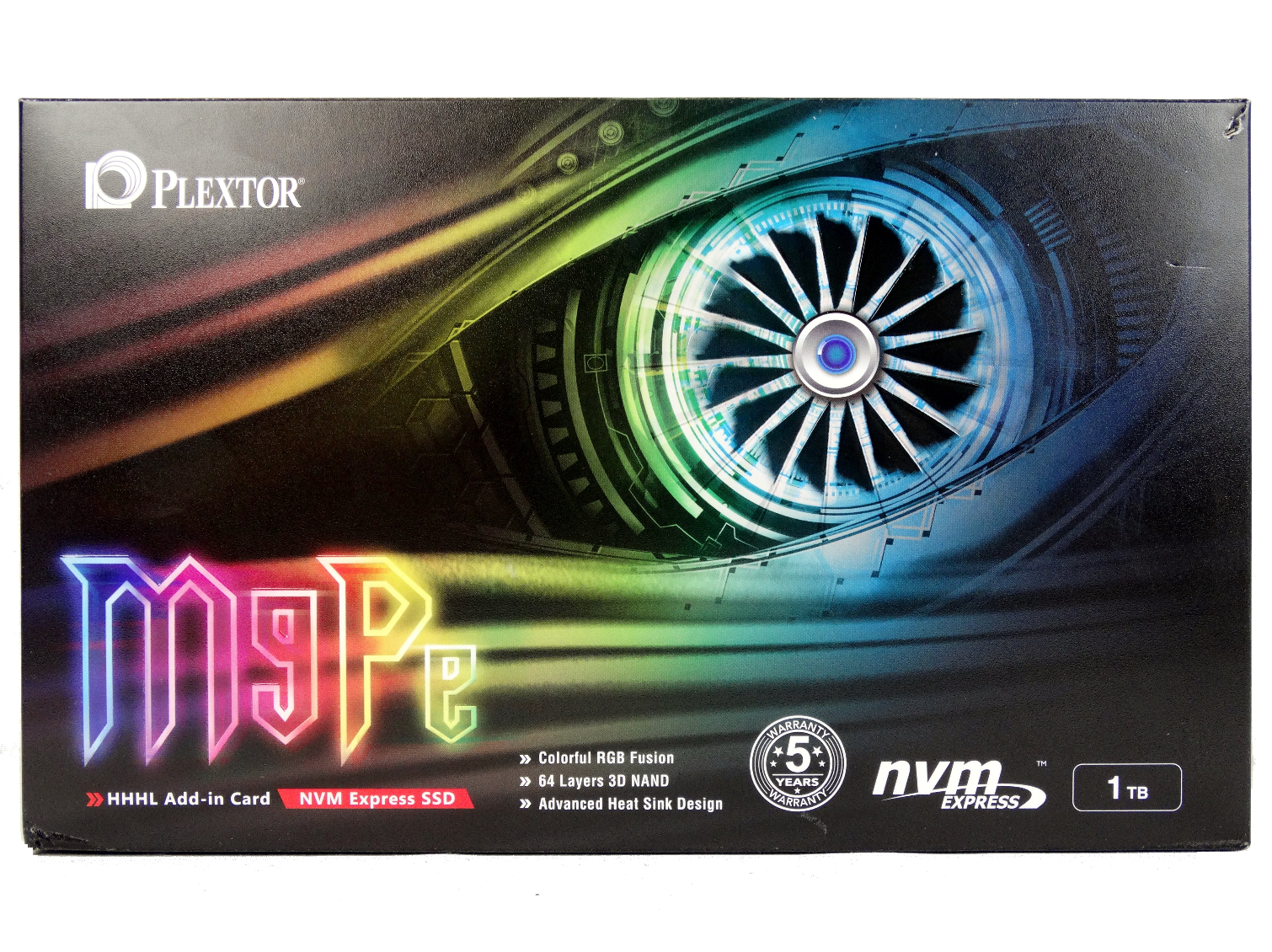
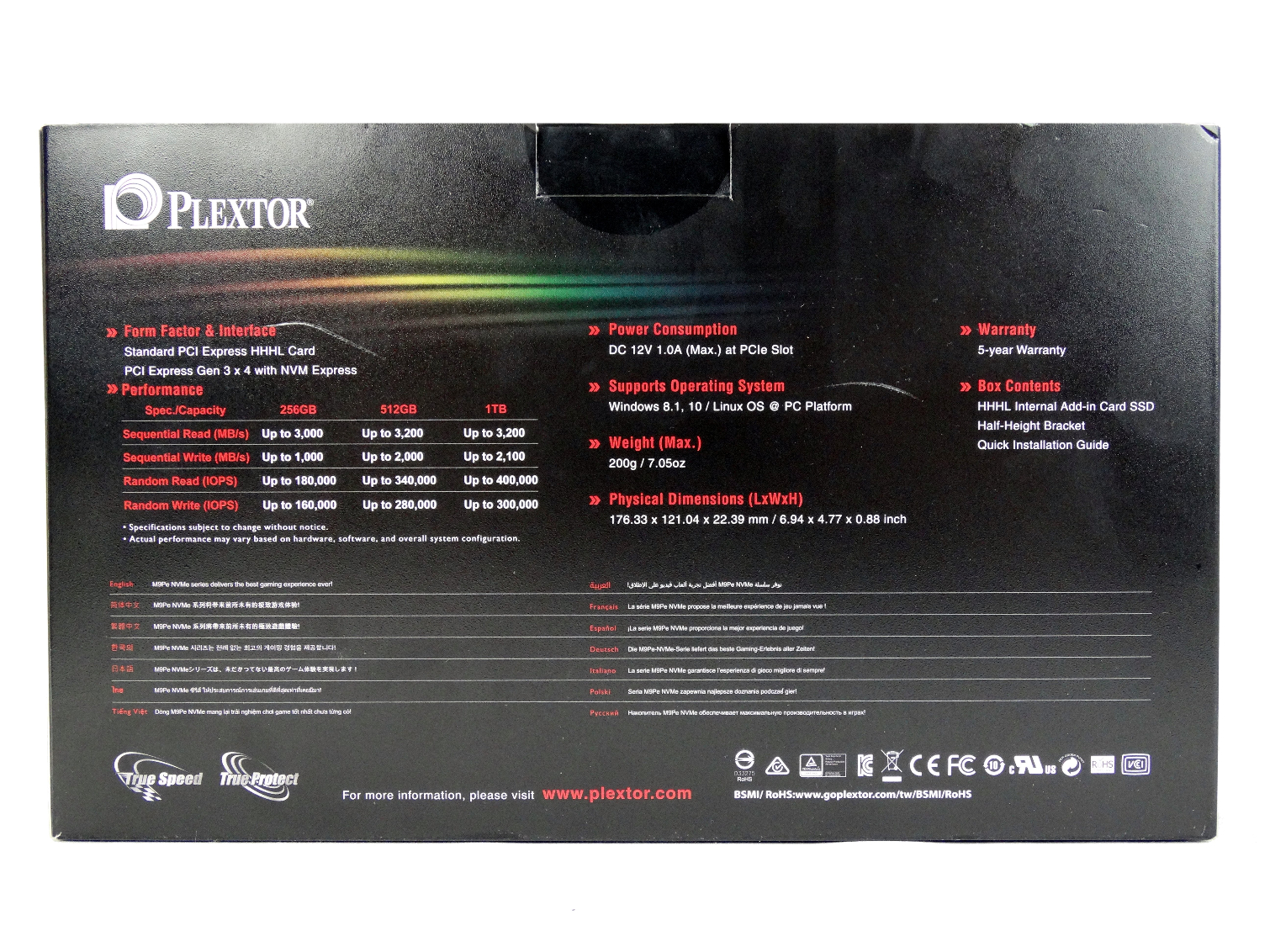
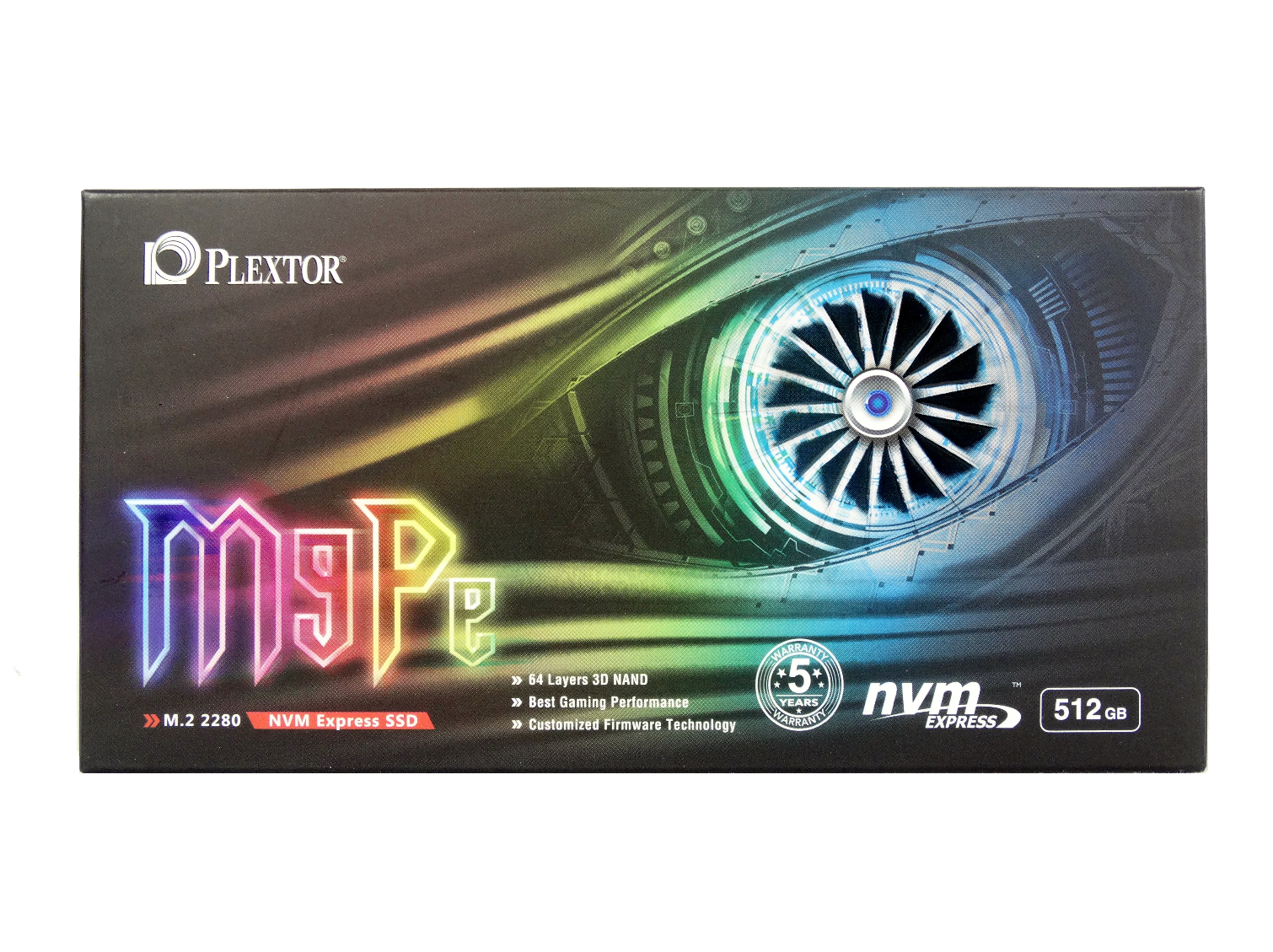
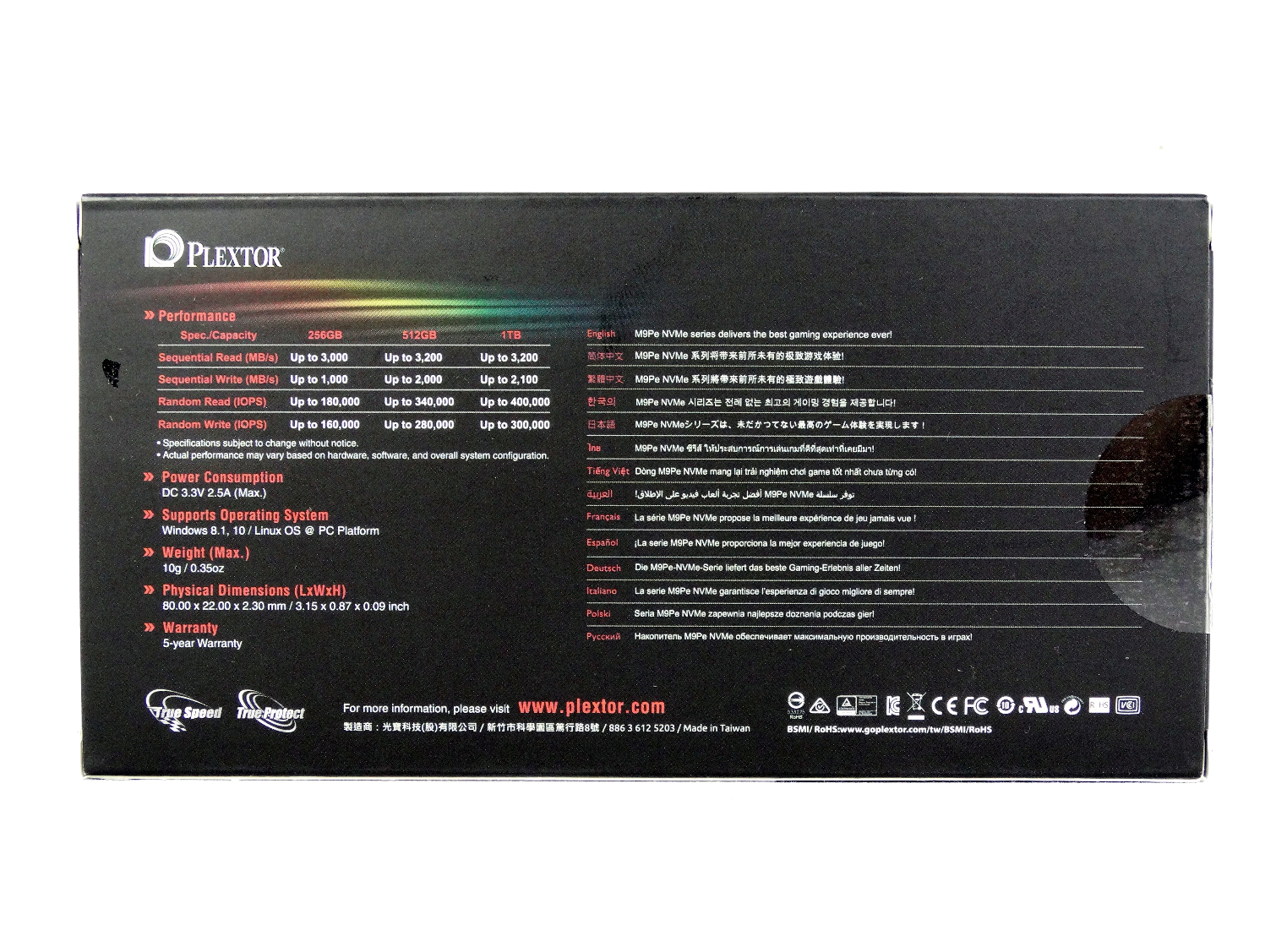
Plextor kicks off the 9-Series with a fresh look that includes an eye made from a jet engine. The M9PeY package is essentially a larger version of the M9PeGN. The back side of the package lists performance specifications, features, and warranty information.
A Closer Look
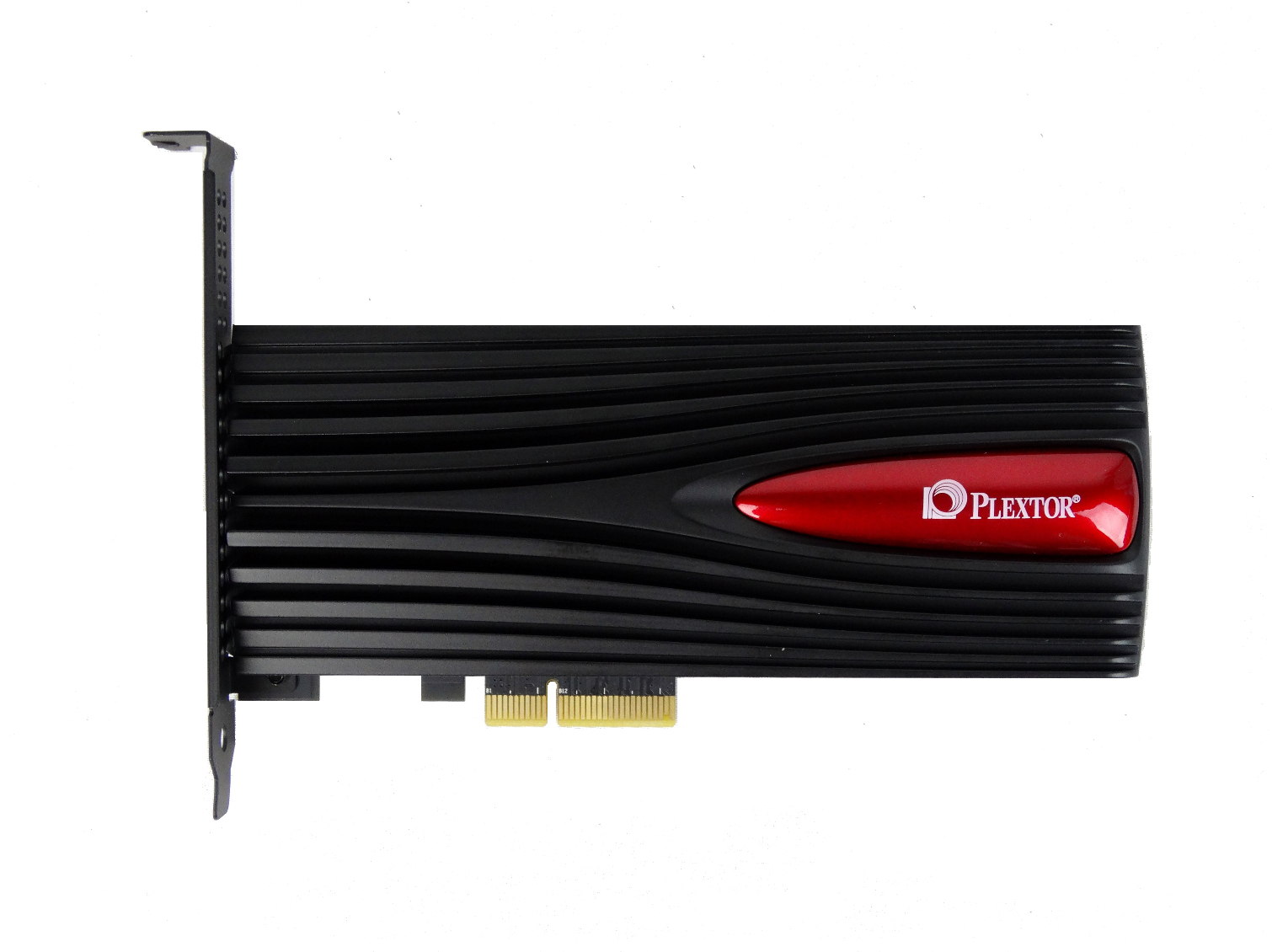
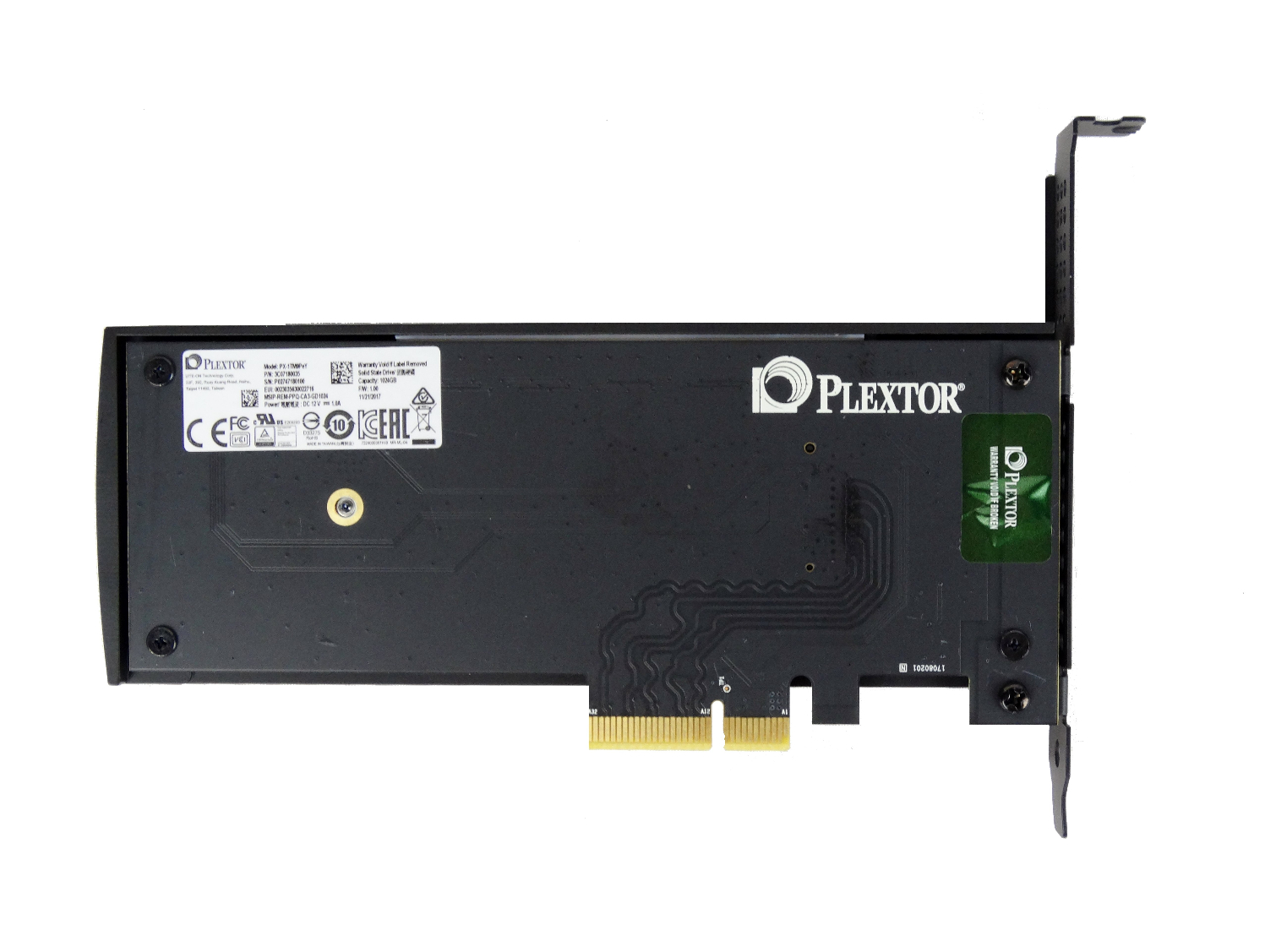
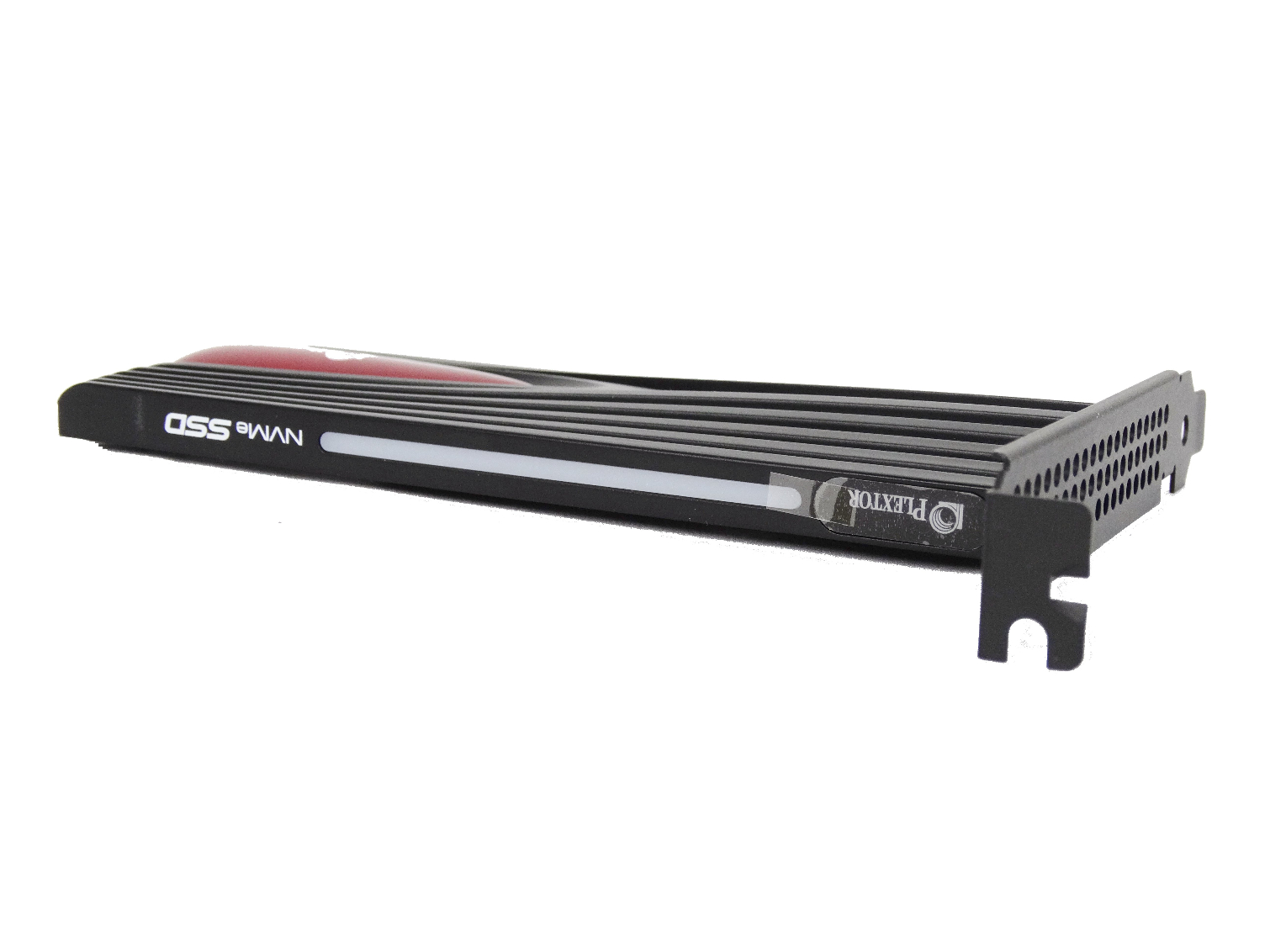
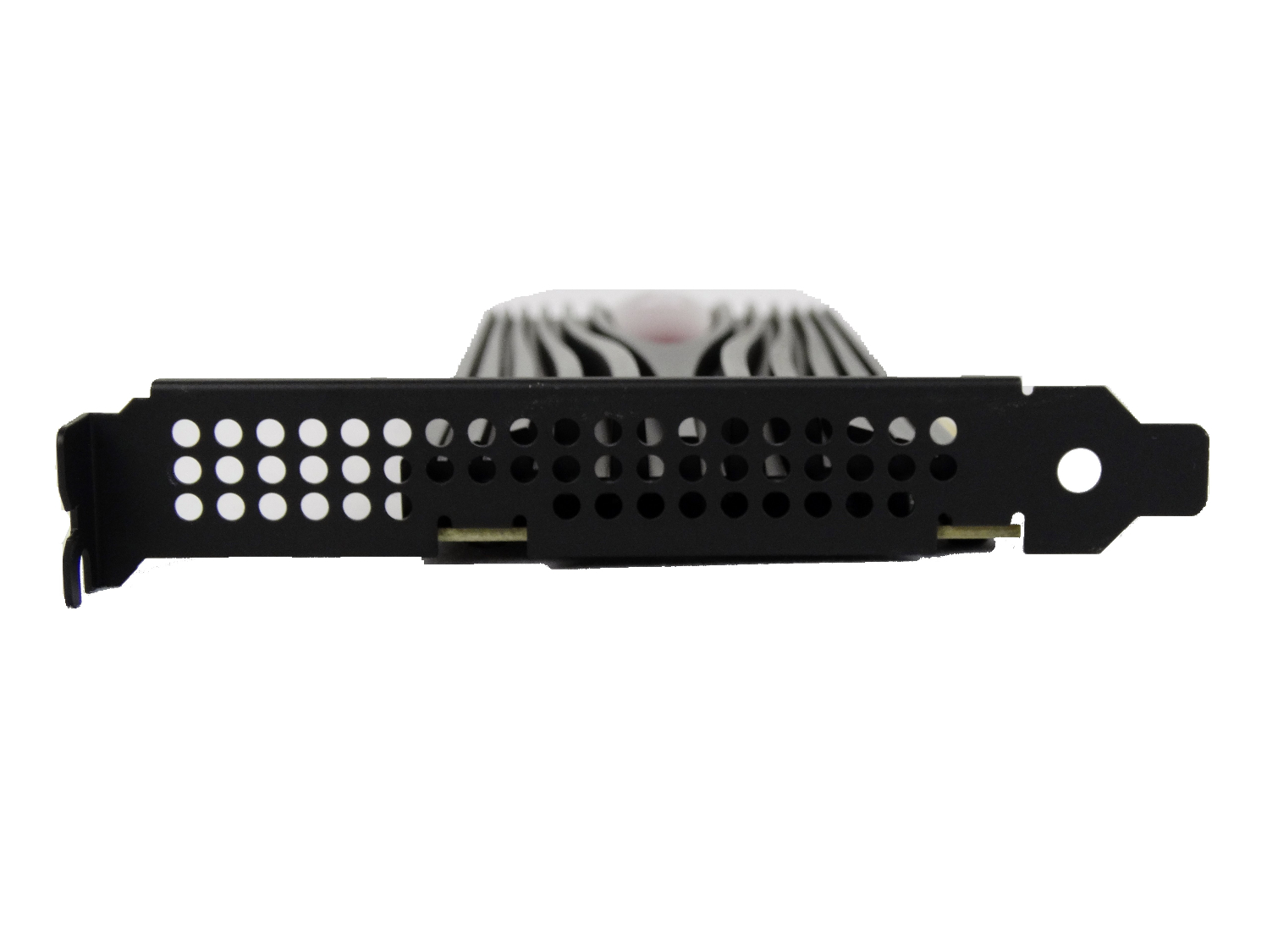
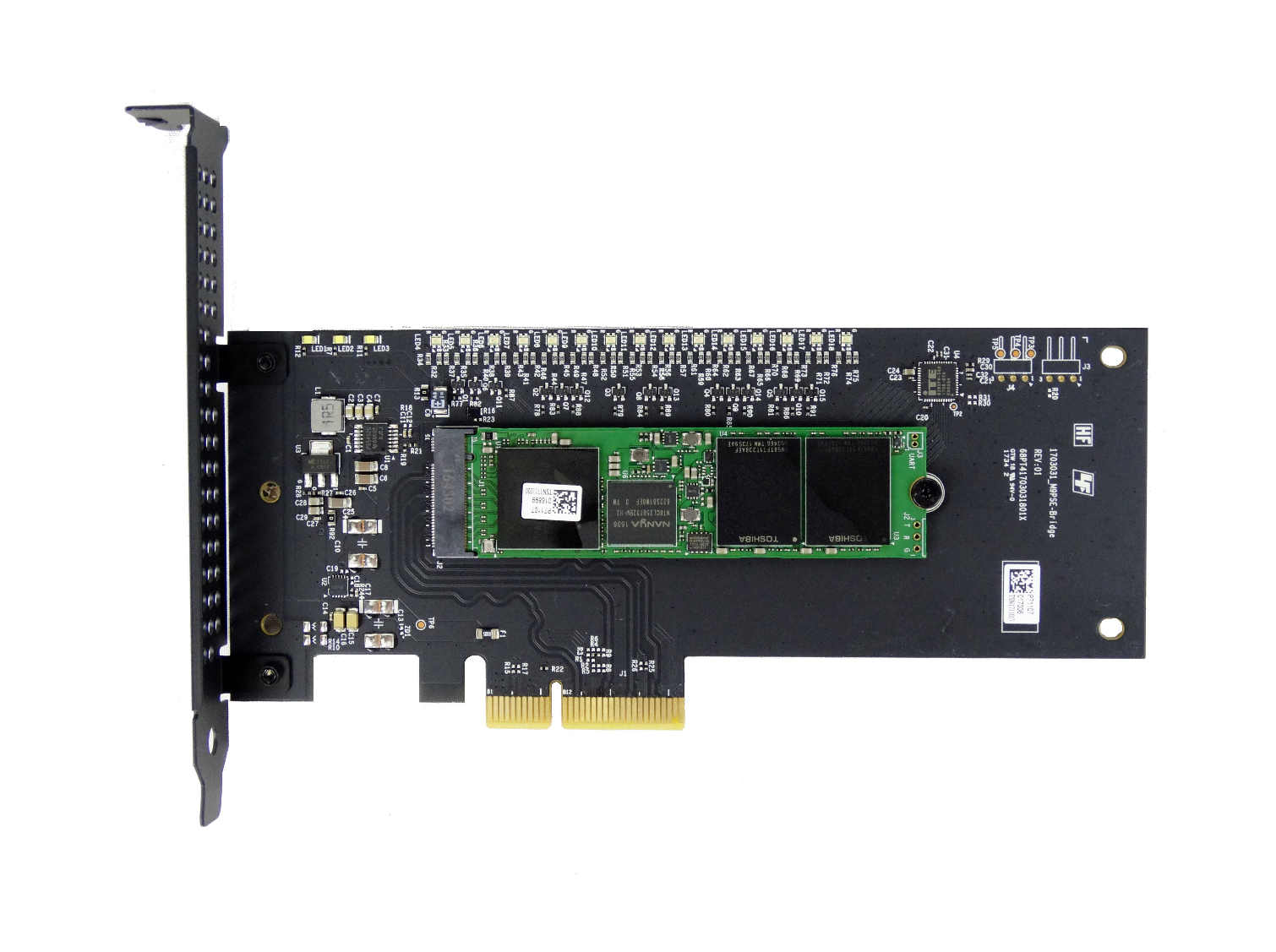

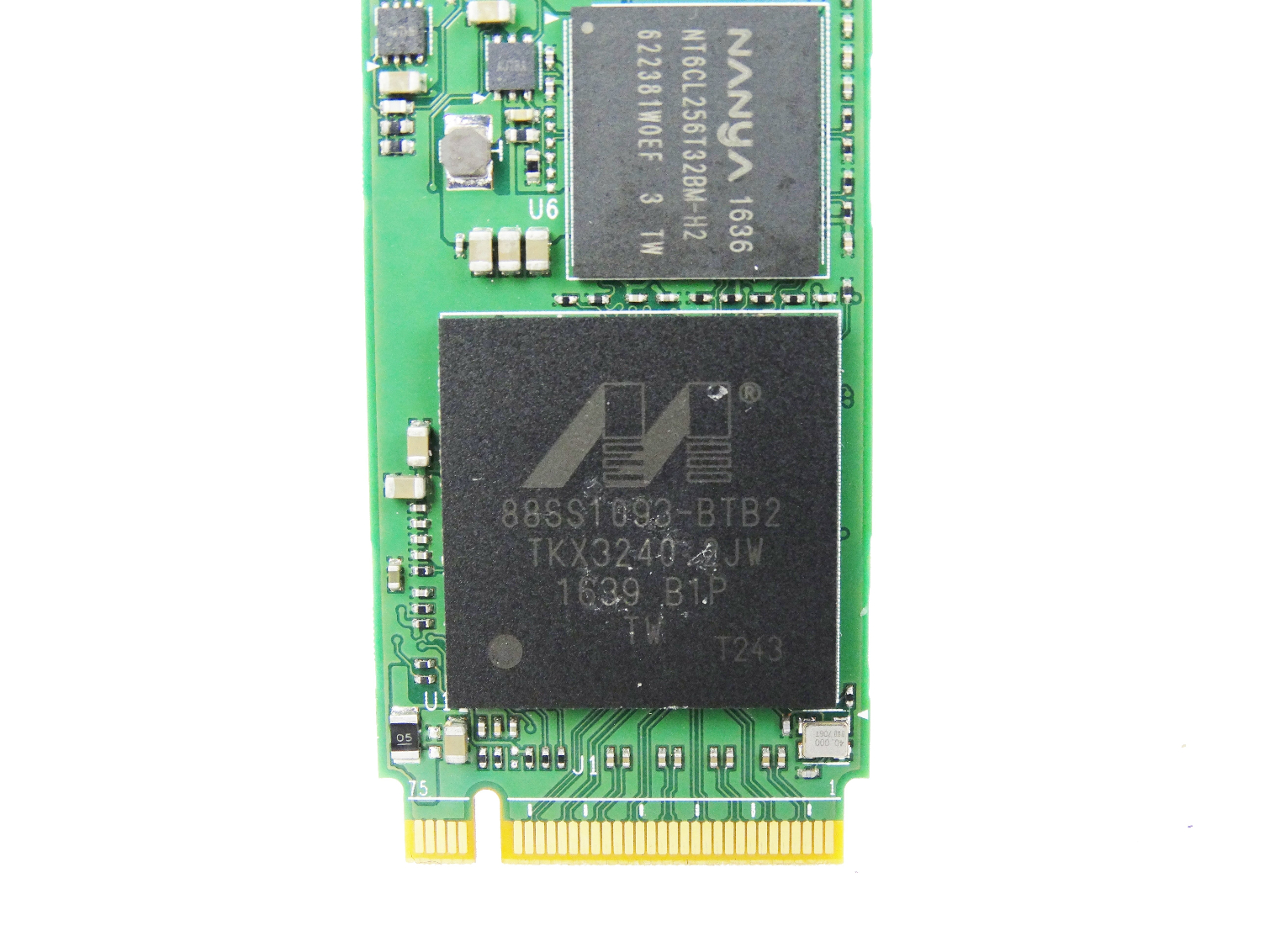
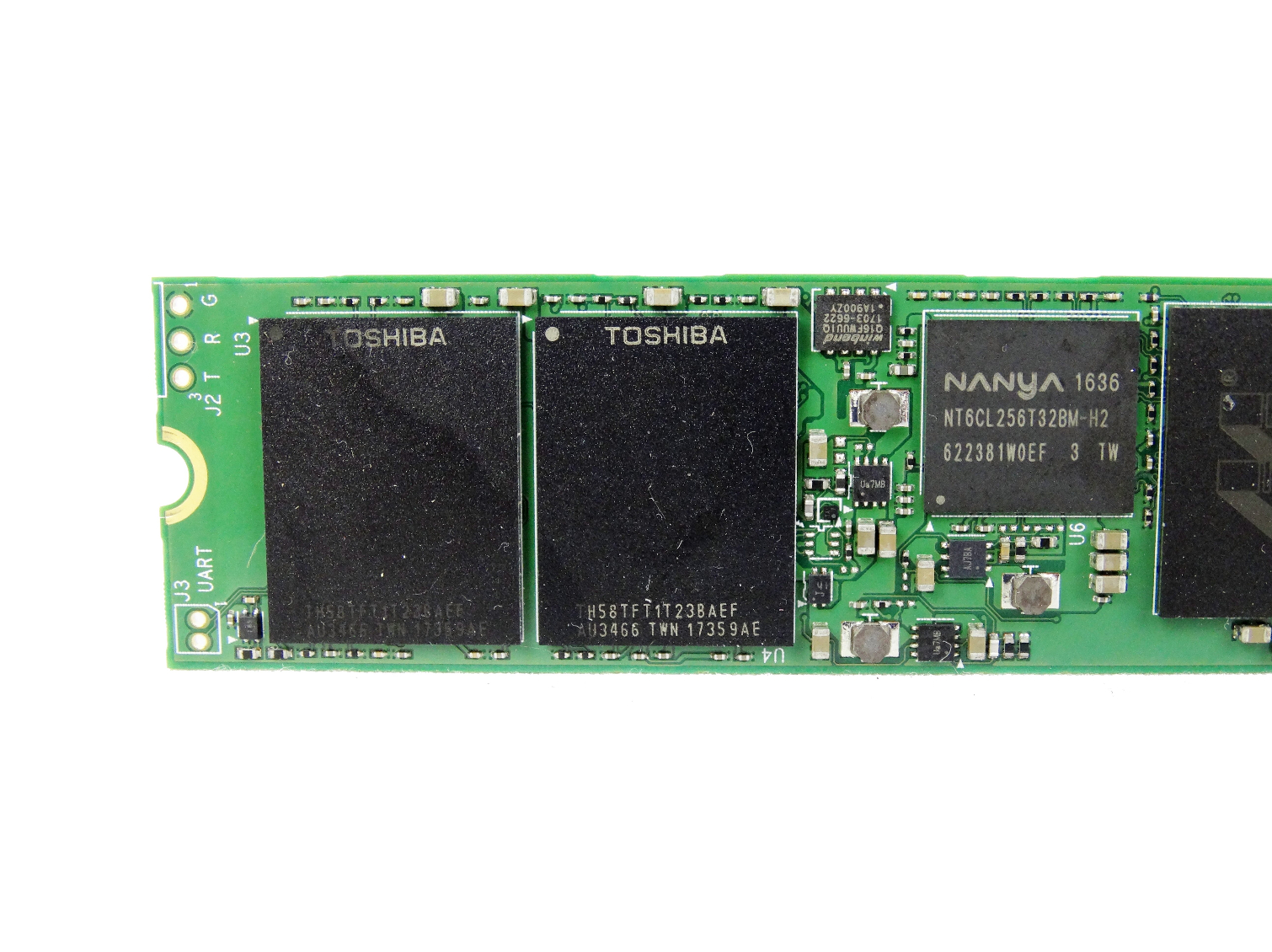
These are images of the M9PeY and its M.2 SSD. Plextor's M.2 "GN" model is identical to the bare M.2 2280 drive in the images, sans a Plextor sticker that covers the controller, DRAM, and NAND. The M.2 "G" model appears nearly identical to the M8SeG released last June.
The Half-Height Half-Length (HHHL) add-in card looks great. It uses the same heatsink as the M8Se, but a red bubble replaces the blue one on the old design. Plextor says the new heatsink is 30% more efficient than the M8Pe's solid aluminum version that came with a smooth surface. The fins are cut into the surface. The design reduces weight but also increase the surface area to boost cooling efficiency.
There are two LED areas on the outside edge. The Plextor logo lights up with a blueish-tint white color, but the long strip changes colors depending on the status of the drive. Plextor did a good job with the lighting, but there isn't a way to turn the lights off.
MORE: Best SSDs
MORE: How We Test HDDs And SSDs
MORE: All SSD Content

Chris Ramseyer was a senior contributing editor for Tom's Hardware. He tested and reviewed consumer storage.
-
WyomingKnott "We'll see more new products introduced than ever before with higher capacities, newer controllers, and lower price points."Reply
And, sadly, falling performance as drives are no longer made with single-bit cell flash. I'm positive that cheaper will drive out faster in this area; I'm curious as to whether a high-end segment will persist or if we have actually reached peak performance for flash SSDs and it will be all downhill from here. Will last year's best SSDs be traded like rare antiques someday? -
richardvday Sadly the editing in these articles is horrible anymore. This article is rife with bad punctuation and missing words so the sentences make no sense without them.Reply
Many articles come out like this anymore here its really getting bad. -
Sakkura Reply20549352 said:"We'll see more new products introduced than ever before with higher capacities, newer controllers, and lower price points."
And, sadly, falling performance as drives are no longer made with single-bit cell flash. I'm positive that cheaper will drive out faster in this area; I'm curious as to whether a high-end segment will persist or if we have actually reached peak performance for flash SSDs and it will be all downhill from here. Will last year's best SSDs be traded like rare antiques someday?
3DXPoint will cover the extreme performance segment just fine. What people want from flash SSDs is more GB per dollar. And it looks like 2018 will finally start to get us back on track there.
20549381 said:Wondering where 960 evo stands in those graphs...
It's included in the 1TB graphs. Probably would turn up in about the same place in the ½TB graphs. -
cerealkeller The box is deceiving, it makes you think the PCI-E version has an integrated fan. Which it probably should if thermal throttling is an issue.Reply
